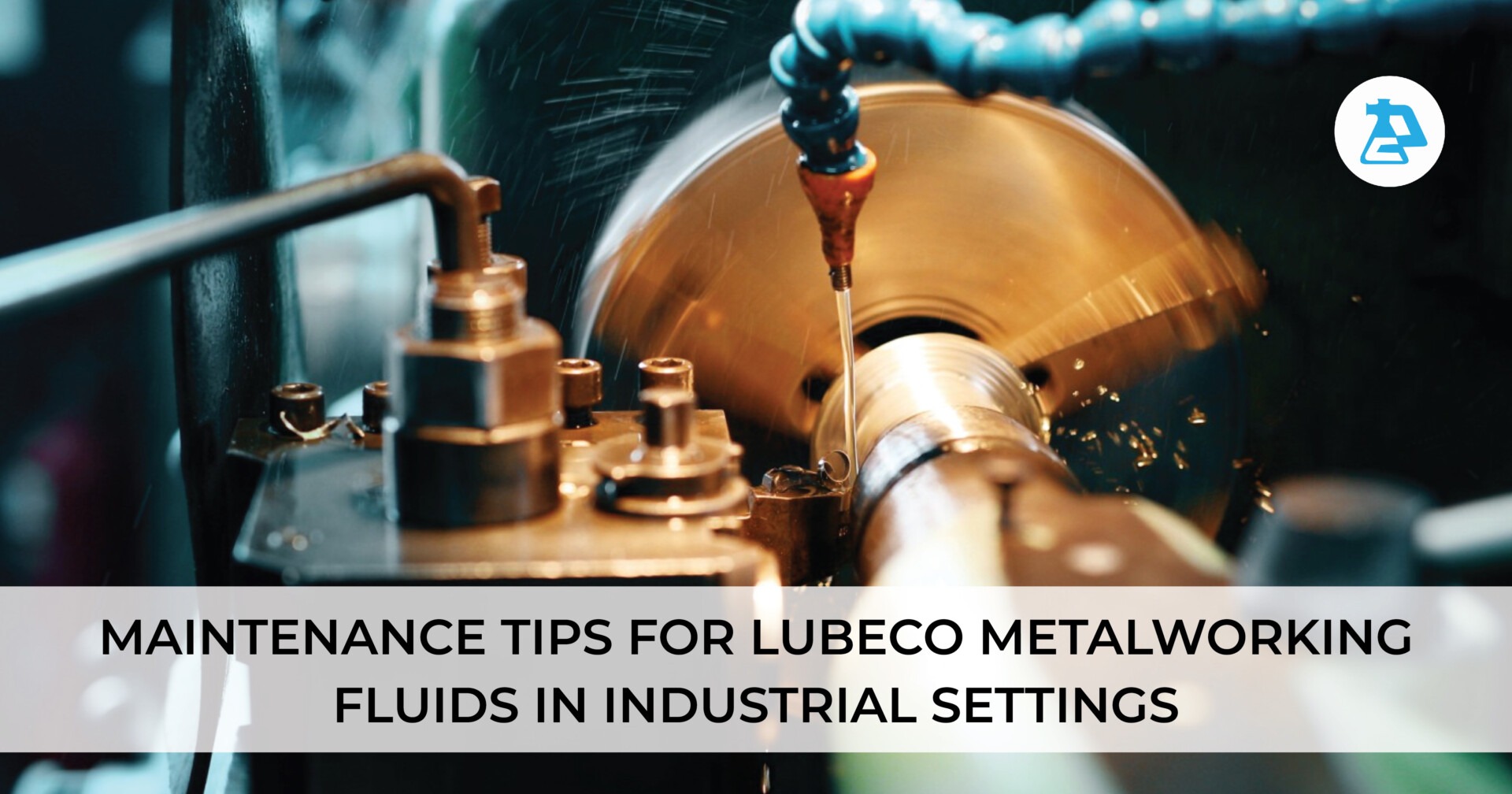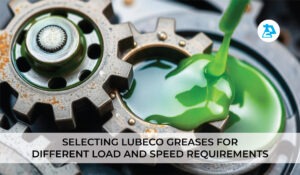In the world of industrial manufacturing, metalworking fluids (MWFs) play a pivotal role in ensuring the efficiency, precision, and longevity of machining processes.
Lubeco Green Fluids is known for high performance and versatility, and is among the most trusted solutions in industrial applications. At the same time, achieving optimal results and maintaining the integrity of these fluids requires diligent upkeep.
This comprehensive guide will provide you with the essential maintenance tips for Lubeco Green Fluids in industrial settings, helping you enhance performance, reduce costs, and ensure workplace safety.
Understanding the Importance of Maintenance
Metalworking fluids serve several critical functions, including:
- Cooling: Reducing the heat generated during machining operations.
- Lubrication: Minimizing friction between the tool and workpiece.
- Chip Removal: Assisting in the removal of metal shavings and debris.
- Corrosion Protection: Preventing rust and oxidation on metal surfaces.
Without proper maintenance, the effectiveness of these functions diminishes, leading to higher operational costs, decreased tool life, and potential health hazards for workers.
Regular maintenance ensures the fluid’s chemical stability, extends its lifespan, and maintains its performance.
Key Maintenance Tips for Lubeco Green Fluids
1. Routine Monitoring and Testing
Frequent testing of your metalworking fluid is the cornerstone of effective maintenance. Key parameters to monitor include:
- pH Levels:
- Optimal pH levels for Lubeco Green Fluids typically range between 8.5 and 9.5.
- Use pH test strips or a pH meter to check levels regularly. Low pH can lead to rusting, while high pH may irritate workers’ skin.
- Concentration:
- The fluid’s concentration should align with the manufacturer’s recommendations.
- Use a refractometer to measure concentration accurately and adjust by adding more concentrate or water as needed.
- Microbial Contamination:
- Regularly test for bacteria and fungi that can degrade fluid quality.
- Employ biocides or antimicrobial agents as prescribed to combat microbial growth.
2. Maintaining Proper Fluid Levels
Operating with insufficient fluid levels can result in overheating, increased tool wear, and poor surface finishes. Regularly check the fluid reservoir and ensure it is adequately filled. Automatic fluid monitoring systems can be an excellent investment for continuous oversight.
3. Contamination Control
Contaminants such as tramp oil, dirt, and metal particles can compromise the performance of metalworking fluids. Implement the following practices:
- Use Skimmers: Oil skimmers can effectively remove tramp oil from the fluid’s surface, reducing the risk of bacterial growth and ensuring cleaner fluids.
- Filtration Systems: Employ filtration units to capture fine metal particles and debris, preserving the fluid’s clarity and performance.
- Scheduled Cleaning: Regularly clean sumps, tanks, and distribution systems to prevent sludge buildup.
4. Temperature Management
Temperature fluctuations can affect the fluid’s stability and performance. Maintain a stable temperature in your facility and monitor the fluid’s operating temperature. Installing a cooling system for high-temperature processes can help maintain optimal fluid conditions.
5. Proper Mixing Techniques
When preparing metalworking fluid solutions, always follow the “oil-to-water” rule: add concentrate to water, not the other way around. This prevents the formation of unstable emulsions. Use mechanical mixers for consistency in larger operations.
6. Worker Training and Safety
Educate workers on the correct handling, usage, and maintenance of Lubeco Green Fluids. Emphasize the importance of wearing personal protective equipment (PPE) and understanding safety data sheets (SDS) for each fluid.
7. Regular Fluid Replacement
While proper maintenance can extend the life of metalworking fluids, periodic replacement is necessary to maintain performance. Establish a fluid change schedule based on your machining processes and usage levels.
Advanced Maintenance Strategies
1. Implementing Fluid Management Systems
Automated fluid management systems provide real-time monitoring of fluid levels, concentration, and contamination. These systems can:
- Alert you to deviations from optimal conditions.
- Automate fluid replenishment to maintain ideal concentration levels.
- Reduce manual labor and errors.
2. Analyzing Fluid Performance Trends
Keep detailed records of fluid test results, replacement schedules, and maintenance activities. Analyzing these trends can help identify patterns and predict potential issues before they escalate.
3. Upgrading to Advanced Filtration Technologies
Advanced filtration systems, such as centrifuges and vacuum filters, provide superior contamination control. These technologies are especially beneficial for facilities with high-volume operations or stringent quality requirements.
Troubleshooting Common Issues
1. Foaming
- Causes: Excessive agitation, incorrect concentration, or contamination.
- Solutions: Adjust concentration levels, reduce pump speed, or use an anti-foaming agent.
2. Unpleasant Odors
- Causes: Bacterial contamination or stagnant fluid.
- Solutions: Clean the sump, add biocides, and ensure proper fluid circulation.
3. Rust on Workpieces
- Causes: Low pH levels, improper fluid concentration, or poor mixing.
- Solutions: Test and adjust pH and concentration levels, and verify mixing procedures.
4. Skin Irritation
- Causes: High pH, microbial contamination, or improper handling.
- Solutions: Provide PPE, ensure proper hygiene practices, and test fluid for contaminants.
Environmental Considerations
Disposing of used metalworking fluids must comply with local regulations to minimize environmental impact. Follow these steps:
- Pre-treatment: Remove contaminants such as tramp oil and solids.
- Waste Disposal: Partner with certified waste management companies for proper disposal.
- Recycling: Explore fluid recycling options to reduce waste and lower costs.
Benefits of Proper Maintenance
Investing time and resources in the maintenance of Lubeco Green Fluids offers several benefits:
- Enhanced Tool Life: Proper lubrication and cooling reduce tool wear, extending the lifespan of cutting tools.
- Improved Workpiece Quality: Consistent fluid performance ensures precision machining and better surface finishes.
- Cost Savings: Regular maintenance minimizes fluid replacement frequency and reduces downtime.
- Worker Safety: Well-maintained fluids are less likely to cause health issues such as skin irritation and respiratory problems.
- Environmental Responsibility: Proper disposal and recycling reduce the environmental footprint of your operations.
To Conclude
Lubeco Green Fluids are indispensable for efficient and precise industrial machining. However, their performance and longevity depend heavily on proper maintenance practices.
By implementing the tips outlined in this guide—from routine testing and contamination control to advanced monitoring systems—you can maximize the benefits of your metalworking fluids while minimizing operational costs and risks.
Remember, consistent maintenance not only safeguards your equipment and processes but also ensures a safer and more sustainable workplace.
FAQ’s
- What are the signs that my metalworking fluid needs replacement?
Signs include unpleasant odors, excessive foaming, poor tool performance, and visible contamination such as sludge or discoloration. Regular testing can also indicate when replacement is necessary. - What is the best way to monitor the condition of my metalworking fluids?
Regular testing is key. Use pH meters or test strips to monitor pH levels, a refractometer for concentration, and conduct microbial tests to check for contamination. Automated fluid management systems can also help. - How should I dispose of used Lubeco metalworking fluids?
Pre-treat the fluids to remove contaminants like tramp oil and solids, then work with certified waste management companies for disposal. Recycling options may also be available to reduce waste and costs.






